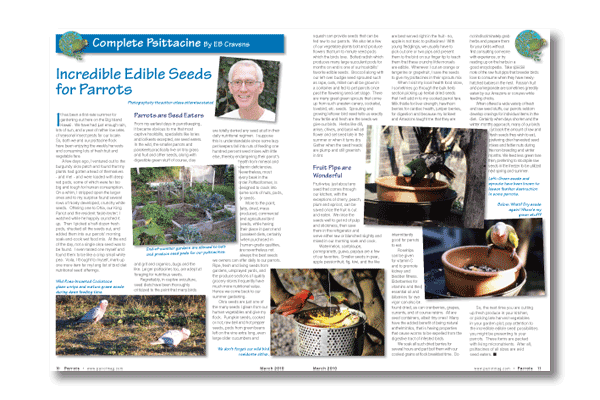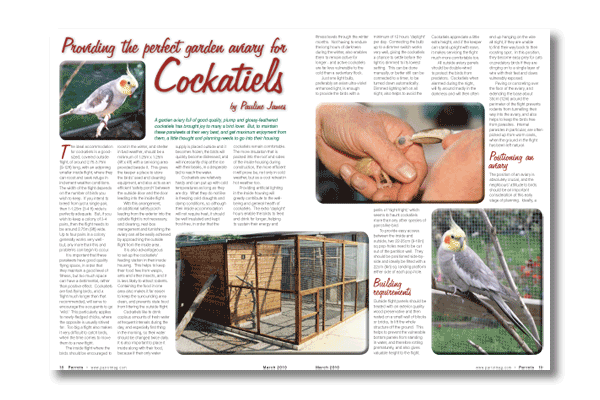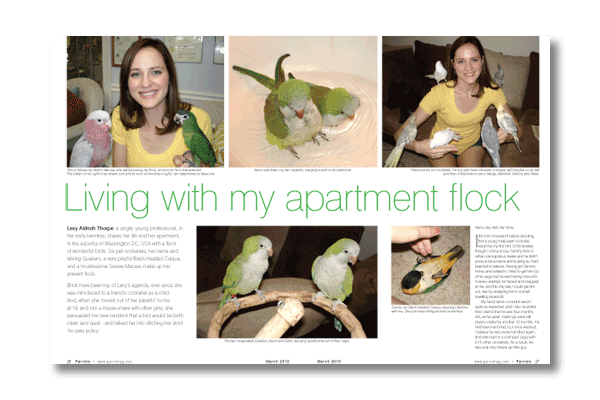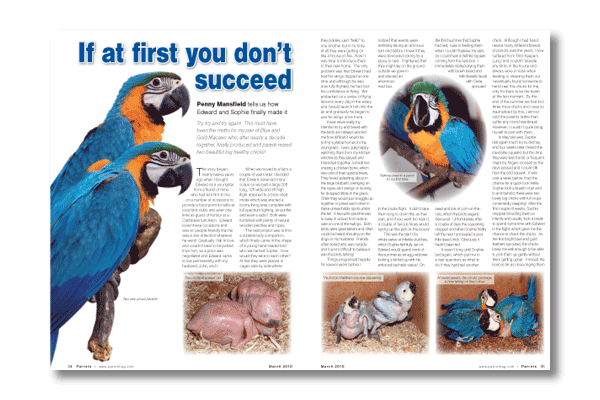
Incredible Edible Seeds for Parrots
EB Cravens
It has been a first-rate summer for gardening out here on the Big Island Hawaii. We have had just enough rain, lots of sun, and a year of rather low rates of seasonal insect pests for our locale. So, both we and our psittacine flock have been enjoying the weekly harvests and consuming lots of fresh fruit and vegetable fare.
A few days ago, I ventured out to the burgundy okra patch and found that my plants had gotten ahead of themselves - and me! - and were loaded with deep red pods, some of which were far too big and tough for human consumption. On a whim, I stripped open the larger ones and to my surprise found several rows of nicely developed, crunchy white seeds. Offering one to Ohia, our King Parrot and the resident 'taste-tester', I watched while he happily crunched it up. Then I picked a half-dozen fresh pods, shucked all the seeds out, and added them into our parrots’ morning soak-and-cook wet food mix. At the end of the day, not a single okra seed was to be found. I even tasted one myself and found them to be like a crisp small white pea. Voila, I thought to myself, mark up one more item for my long list of bird diet nutritional seed offerings.
Read more in the magazine…
Buy a copy now!
BACK

Garlic’s Medicinal Properties – Scientific or Anecdotal?
Leslie Moran
Recently, I mentioned using garlic as a medicinal herb with birds. This provoked the following comment.
“The age-old myth of garlic used as medicine rears its head again. The dose of garlic necessary to kill parasites also kills the host. As far as its medicinal and immunostimulant properties are concerned, there is absolutely no peer-reviewed scientific evidence validating this. The plural of anecdote is not fact. Just because someone says it works does not mean that it actually does.”
According to the American Botanical Council, garlic (Allium sativum), is one of the most widely used herbs across Europe and the US for reducing the risks associated with cardiovascular disease.
Read more in the magazine…
Buy a copy now!
BACK

Providing the perfect garden aviary for Cockatiels
Pauline James
A garden aviary full of good quality, plump and glossy-feathered cockatiels has brought joy to many a bird lover. But, to maintain these parakeets at their very best, and get maximum enjoyment from them, a little thought and planning needs to go into their housing.
The ideal accommodation for cockatiels is a good-sized, covered outside flight, of around 2.75-3.75m (9-12ft) long, with an adjoining smaller inside flight, where they can roost and seek refuge in inclement weather conditions. The width of the flight depends on the number of birds you wish to keep. If you intend to breed from just a single pair, then 1-1.25m (3-4 ft) wide is perfectly adequate. But, if you wish to keep a colony of 3-4 pairs, then the flight needs to be around 2.75m (9ft) wide. Up to four pairs in a colony generally works very well - but, any more than this and problems can begin to occur.
It is important that these parakeets have good quality flying space, in order that they maintain a good level of fitness, but too much space can have a detrimental, rather than positive effect. Cockatiels are fast-flying birds, and a flight much longer than that recommended, will serve to encourage the occupants to go ‘wild.’ This particularly applies to newly-fledged chicks, where the opposite is usually strived for. Too big a flight also makes it very difficult to catch birds, when the time comes to move them to a new flight.
The inside flight where the birds should be encouraged to roost in the winter, and shelter in bad weather, should be a minimum of 1.25m x 1.25m (4ft x 4ft) with a servicing area provided beside it. This gives the keeper a place to store the birds’ seed and cleaning equipment, and also acts as an efficient ‘safety porch’ between the outside door and the door leading into the inside flight.
With this arrangement, an additional safety porch leading from the exterior into the outside flight is not necessary, and cleaning, nest-box management and furnishing the aviary can all be easily achieved by approaching the outside flight from the inside area.
Read more in the magazine…
Buy a copy now!
BACK

Living with my apartment flock
Lexy Aldrich Thorpe, a single, young professional, in her early twenties, shares her life and her apartment, in the suburbs of Washington DC, USA with a flock of wonderful birds. Six pet cockatiels, two tame and talking Quakers, a very playful Black-headed Caique, and a troublesome Severe Macaw, make up her present flock.
Birds have been top of Lexy’s agenda, ever since she was introduced to a friend’s cockatiel as a child. And, when she moved out of her parents’ home at 19, and into a house-share with other girls, she persuaded her new landlord that a bird would be both clean and quiet - and talked her into ditching her strict ‘no pets policy.’
Here Lexy tells her story:
I did a lot of research before deciding, that a young male pearl cockatiel, would be my first bird. Unfortunately though, I chose to buy Sammy from a rather unscrupulous dealer and he didn’t prove to be as tame and trusting as I had been led to believe. Having got Sammy home, and settled in, I tried to get him out of his cage, but he was having none of it. At every attempt, he hissed and snapped at me, and the only way I could get him out, was by wrapping him in a small towelling facecloth.
Read more in the magazine…
Buy a copy now!
BACK

If at first you don’t succeed
Penny Mansfield tells us how Edward and Sophie finally made it.
Try, try and try again! This must have been the motto for my pair of Blue and Gold Macaws who, after nearly a decade together, finally produced and parent-reared two beautiful big healthy chicks!
The story began nearly twelve years ago when I bought Edward as a youngster from a friend of mine who had lent him to me on a number of occasions to provide a focal point for talks at local bird clubs and even one time as guest of honour at a Caribbean luncheon. Edward loved these occasions and was so people-friendly that he was a star attraction wherever he went! Gradually I fell in love and couldn’t bear to be parted from him, so a price was negotiated and Edward came to live permanently with my husband, John, and I.
When we moved to a farm a couple of years later I decided that Edward deserved more scope so we built a large 20ft long, 12ft wide and 8ft high flight adjoined to a brick shed inside which was erected a roomy living area complete with full spectrum lighting, air purifier and even a radio! Both were furnished with plenty of natural wooden perches and ropes.
Read more in the magazine…
Buy a copy now!
BACK





